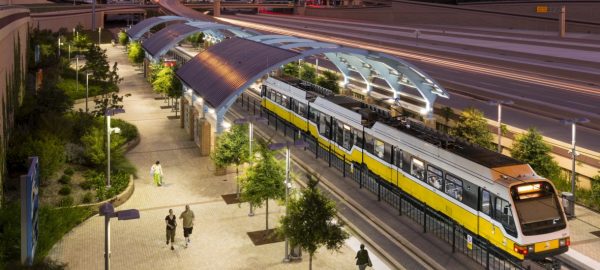Nashville: the name brings to mind country music, Tennessee whiskey, country fried steak, and light rail. Well, OK, not yet that last one. The city currently has only one rail line, which provides infrequent service aimed solely at moving commuters between the suburbs and downtown.
But the Nashville public transportation authority has a new $6 billion plan for dramatic expansion. The city’s residents are mostly behind it and so is the business community. The big question: Will Tennessee’s conservative politicians be willing to pay for it?
The plan
The transportation authority — referred to as the MTA/RTA as it’s a dual urban and regional transit agency — released its package of recommendations last month under the gratingly twee name nMotion. It proposes building four new light rail lines, creating several bus rapid transit lines on freeways, adding express buses on arterial roads, and introducing bus service on the interstate highways with stops along the shoulder.
The plan emerged from a 15-month-long process. The MTA/RTA consulted with a wide array of city residents and business leaders in meetings and also got over 15,000 public survey responses and more than 3,000 comments. The agency offered up three different plans with varying levels of ambition. Overwhelmingly, Nashvillians chose the biggest, boldest alternative.
One impediment to transit in Nashville is the lack of walkability and bikeability, and the plan would address that too. To take a bus or train somewhere, you have to be able to walk or bike to a station and from a station to your final destination. That’s often impossible on Nashville’s streets, which frequently lack sidewalks and safe crosswalks, especially on the major roads that would be getting new bus and transit service.
“Safety is one of the main reasons people cite for not using the bus, and they mean danger from cars [while one is] walking to or standing at bus stops,” says Nora Kern, executive director of Walk Bike Nashville, an advocacy group. With that in mind, MTA/RTA has integrated pedestrian improvements to over 200 miles of streets into its plan and proposes creating a bike-share program and building bicycle parking at transit stops.
How to pay for it
To assemble funding for any of the big infrastructure investments, such as a new light rail line, MTA/RTA will need to gather contributions from a bunch of different sources. Typically, when a regional public transit authority wants to build something, it applies for federal and state funding, but most of the money comes from the counties that will directly benefit from the new service.
While the city government in Nashville is likely to greet transit expansion with enthusiasm, the more suburban and rural counties that make up the rest of the 14-county Nashville region tend to be more conservative and less supportive of transit. Last year, state senators from the suburbs of Nashville blocked a proposed bus rapid transit route, fearing that losing a lane to buses would worsen traffic for drivers from their districts.
Getting money from the state and federal government requires the backing — or at least non-interference — of the state government, which is dominated by conservative Republicans. Transportation funding in Tennessee comes mainly from the state gas tax, which hasn’t been raised since 1989. There is already a $6 billion backlog of transportation projects in the state. That’s got Gov. Bill Haslam (R) and state legislators thinking about raising the tax, finally, but that’s a tough sell in a conservative state — and there’s no guarantee that any of the new money would go toward public transit. Plus, in addition to the general aversion to taxes and spending, there is much antipathy for transit outside of the major cities.
Good reasons to make it happen
But some hard realities might persuade Tennesseans to cough up some funding for transit.
First, there’s (continue reading)
